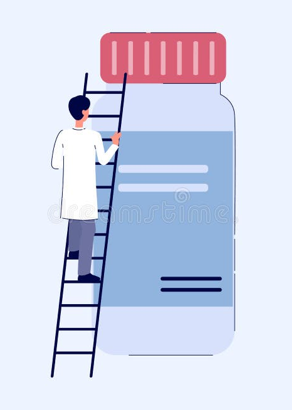Working at height
Falls, even from low levels, can sometimes cause serious injuries. The first basic rule of working at height is to ensure that the equipment used is appropriate for the task and however tempting avoid standing on chairs or boxes. i.e. when getting product from the top shelf in the dispensary.
The use of stepladders or kick stools is quite common practice in a pharmacy environment and as a result presents the potential hazard of falling if equipment is used incorrectly or is badly maintained. The poor storage of a stepladder or kick stool can also result in a trip hazard.
Before you use a stepladder, you firstly need to consider if you are fit to work at height or if there are any circumstances that would mean it is not safe for you to do so, and then think about the condition and the position of the stepladder.
Stepladders in use
- The stepladder must be in good repair with no damaged rungs, broken locking devices or missing stepladder feet which could cause it to wobble
- Ensure you have space to fully open and use any locking devices
- The ground should be firm, level, clean and not slippery
- Avoid side-on working
- Do not overreach and ensure you keep both feet on the same rung or step throughout the task
- Wear clean and suitable footwear
- Do not use the top two rungs of a step ladder unless there is a suitable handrail in place
- Ensure you have three points of contact with the steps at all times, i.e. two feet and one hand and if this is not achievable reassess the task or consider if any further help is required
- If using a kick stool, be prepared to move the step into a new position rather than risk overreaching for access to an item and subsequently losing your balance. Don’t carry items in both hands when using a kick stool
- Consider where ladders are sited avoiding places where a potential hazard could be posed to other people or won’t be seen e.g. behind closed doors
Shelving and storage
Take care when stacking or storing products yourself and watch out for material carelessly stacked by others on shelves. Stack the products securely and not too high, making sure the stack will not topple and that no sharp edges stick out. Be especially cautious for items which are positioned at head height as there is a risk that people may catch their eyes. Heavier items such as large bottles of medicines should be stacked on lower shelves and lighter ones above. Frequently used products should not be stored on high shelves. Products with similar packing should not be stored together as this increases the risk of picking and dispensing errors.

